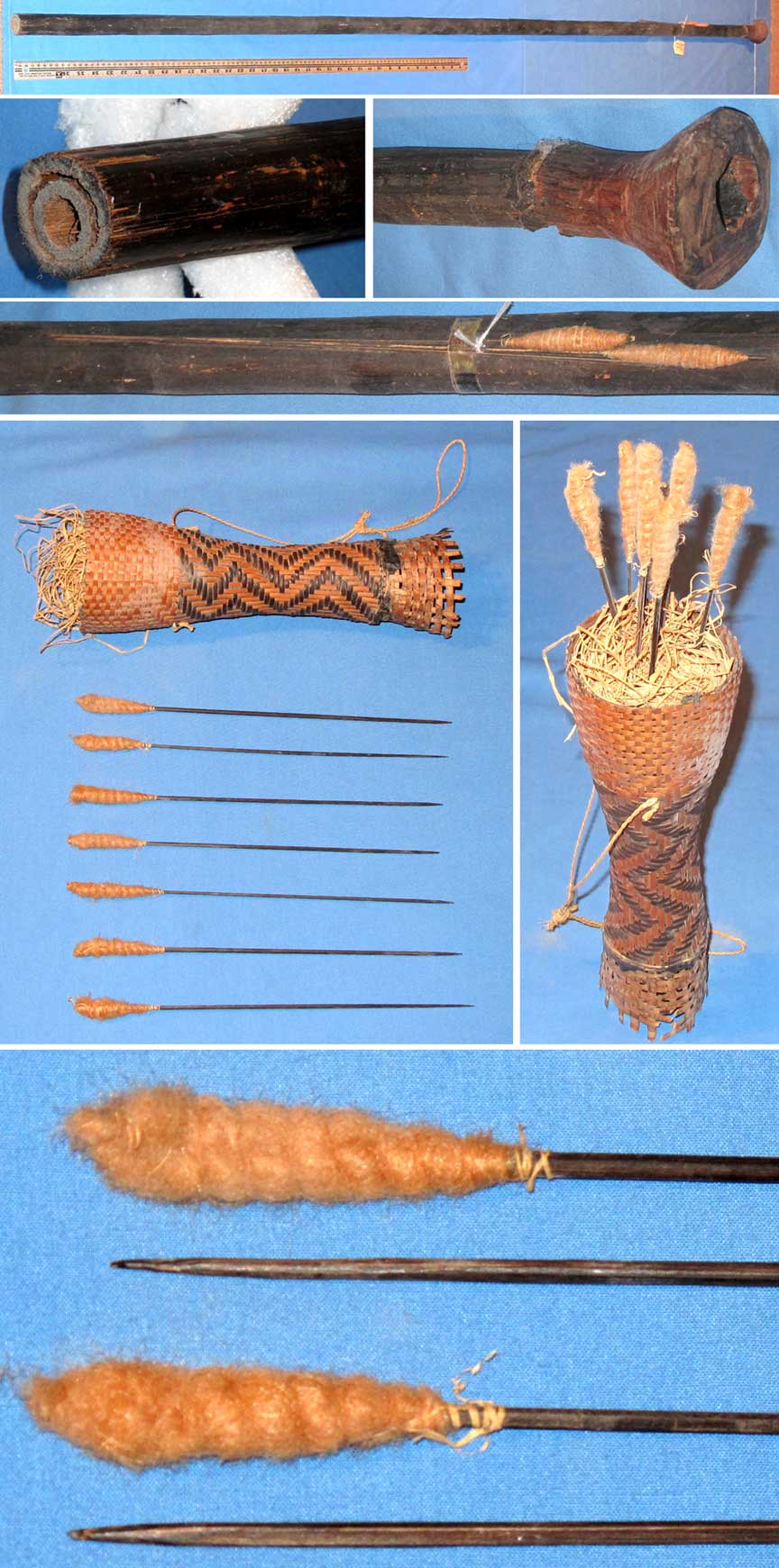Item A35
This Item was Sold on 18 May 2013
for $235
Similar artifacts for sale are often found on the South
American Artifacts web page.
Historical Pricing information for this item and similar artifacts can be found at: Historical Artifact Prices.
|
This blowgun ( blow gun or blowpipe ) was collected in the Amazon in the mid 20th Century. It is used by the indigenous people to hunt birds, monkeys, sloths and other small games. The length is more than 7 feet. This is an artifact, the real thing and not something made for tourists. There are two tubes. The exterior of the outer tube is held with both hands and the inner tube has a small bore diameter for effective propulsion of the darts through pressure from a hunter's breath. There is a hardwood mouthpiece on one end that fits over the exterior of the inner tube and acts as an interface to hold the two tubes together. There are two full darts that came with this blowgun. The two darts are tied to the blowgun with an auction tag. I acquired this blowgun from Russ Hayward's artifact auction in 1999. It is in excellent working condition. I acquired the dart quiver from a different source than the blowgun. On page 119 of the famous Stones Glossary of Arms and Armour, there is a photo of a nearly identical dart quiver with a description that identifies the origin as the upper Amazon basin. The quiver is of basketwork construction. The bottom of the quiver has remnants of a shiny black gum material. Most of the gum is missing. There are 7 full darts with Kapok tufts in the quiver. I do not see any tar on the dart ends, so these probably do not have the paralyzing poison which is usually applied just before the hunt. There is a cord tied to the quiver, but no jawbone. Please note: The cost to ship this blowgun and quiver set will be between $25 and $40 to an address in the USA. The blowgun and dart quiver must be shipped in separate packages. I cannot ship this blowgun to international destinations because of package size. I lived in Panama for nearly 20 years (1950s and 1960s). I spent some time with the indigenous Indians near the border with Colombia. I went on a couple of Howler Monkey hunting expeditions using blowguns. I learned the following from the native people: Blowgun darts are usually made out of sharpened Black Palmwood. Kapok [ cotton-like material from seed pods on local trees] is wrapped around the blunt end of the darts to a diamter that is snug with the bore diameter of the inner tube. The darts are often tipped with poison from the Dendrobates Poison Arrow Frog ( Curare in South America ). Some blowgun quivers include a rat jaw (Piranha jaw in the Amazon) that is attached to the quiver with a short cord. I have read that the teeth on the jaw is used to sharpen the dart tip, but in Panama, the dart is sharpened using a honing stone and the jaw is used to cut a small circumferential groove around the perimeter of the dart near the poisoned tip, especially when hunting monkeys. After the dart penetrates the monkey's skin, the monkey tries to remove the dart, but the circumferential groove weakens the poison dart tip so that it snaps off and stays inside the monkey. It takes a long time for the monkey to slow down and drop from the canopy. More than half of the monkeys die high in the treetops and are lost to the hunters. I am not sure if any of this is the same as how the darts are prepared in the Amazon, but I thought that this information would be of interest to anyone interested in blowguns. I would prefer that the buyer not use this blowgun for hunting. It is a collectible. Instead, it would be better to make a blowgun and dart set using PVC tubing, shish kabob sticks and cotton using the dimensions of this blowgun as a model. |

How to Order | Back to: South American Artifacts | Collectable Artifacts | Historical Artifact Prices | contact: Ted Bailey